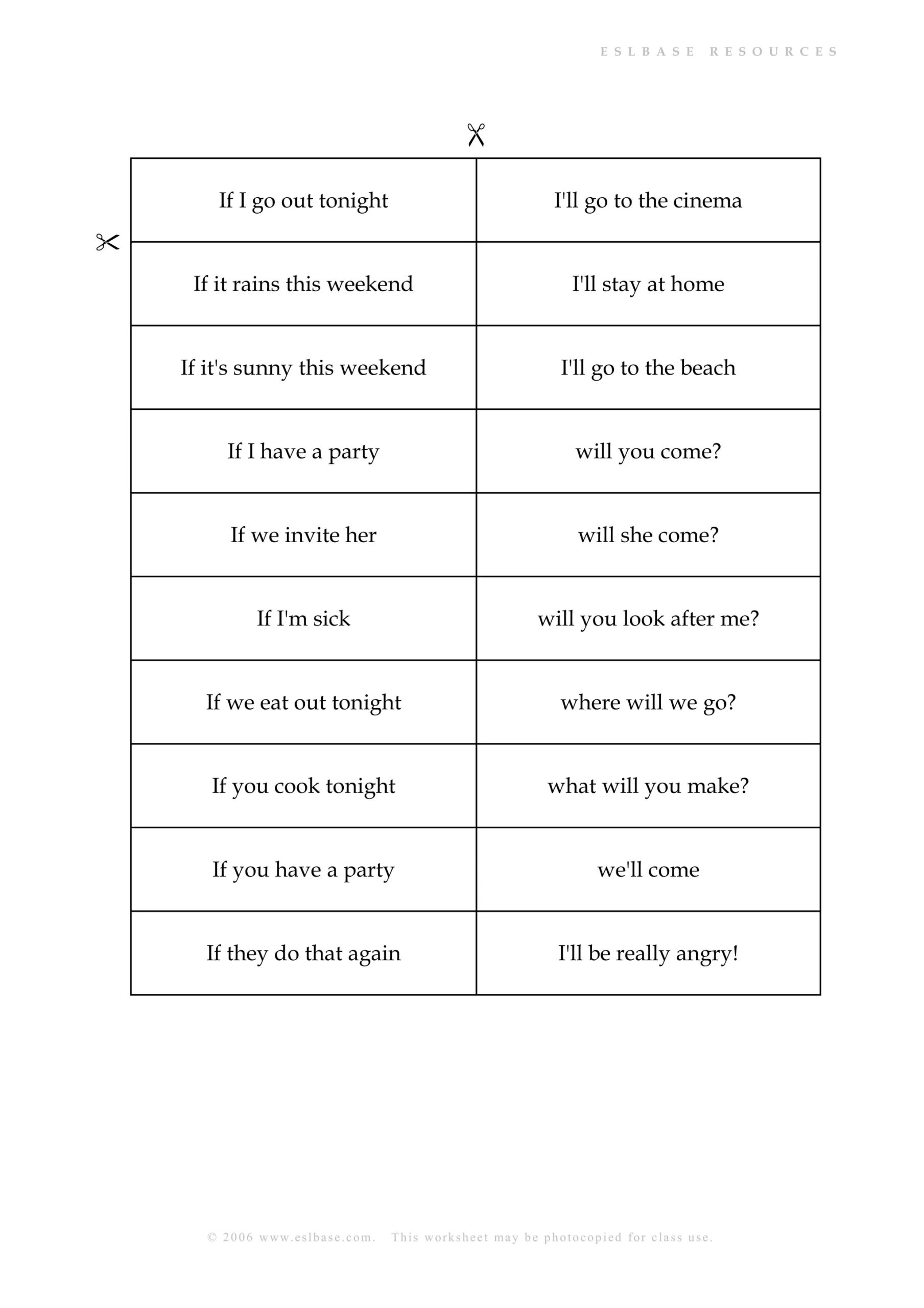In English grammar, the first conditional is a structure used to talk about future events that are likely to happen. It is formed by combining “if” with the present simple tense and “will” or “going to” in the main clause. First conditional sentences are often used to make predictions or promises about future events.
Teaching first conditional to ESL students can be challenging, but incorporating games into the lesson can make it more engaging and fun. Games allow students to practice using the first conditional structure in a meaningful context and help reinforce their understanding of the grammar rule.
Examples of First Conditional Games:
1. If-Then Charades: Write different first conditional sentences on cards and place them in a bag. Divide the class into teams and have a student from each team pick a card from the bag. The student must then act out the scenario described on the card using charades while their team tries to guess the sentence. For example, “If it rains tomorrow, I will bring an umbrella.”
2. Conditional Dice: Create a set of dice with different scenarios written on each side. Students take turns rolling the dice and forming first conditional sentences based on the scenario they roll. For example, if a student rolls “If I win the lottery,” they might say, “I will buy a new car.”
3. If-Then Board Game: Design a board game where students move around the board by correctly forming first conditional sentences. Each square on the board could have a different scenario that students must respond to using the first conditional structure. For example, “If I get an A on the test, I will treat myself to ice cream.”
4. Conditional Pictionary: Provide students with a list of first conditional scenarios and have them draw the situation on the board. The rest of the class must guess the sentence based on the drawing. This game helps students practice both their grammar and drawing skills.
5. Conditional Storytelling: Have students work in pairs to create a short story using first conditional sentences. Each student takes turns adding to the story by using the first conditional structure. This game encourages creativity and collaboration while practicing the grammar rule.
In conclusion, incorporating games into the lesson is an effective way to teach and practice the first conditional structure with ESL students. These interactive activities help students engage with the grammar rule in a fun and meaningful way, improving their understanding and retention of the concept.
